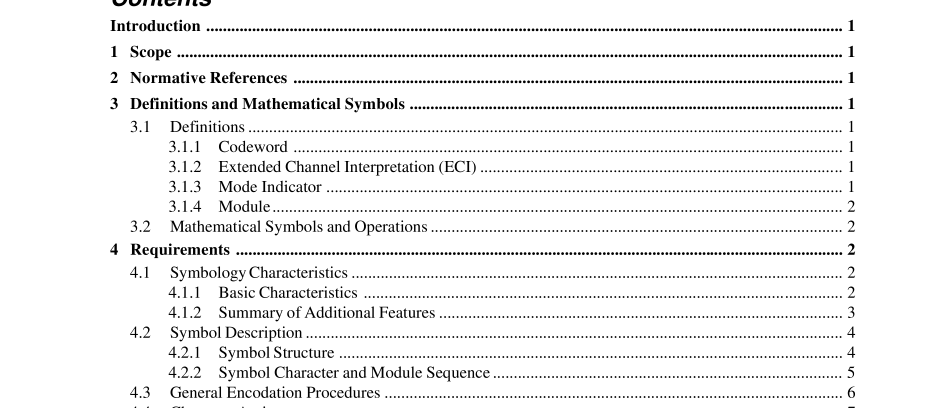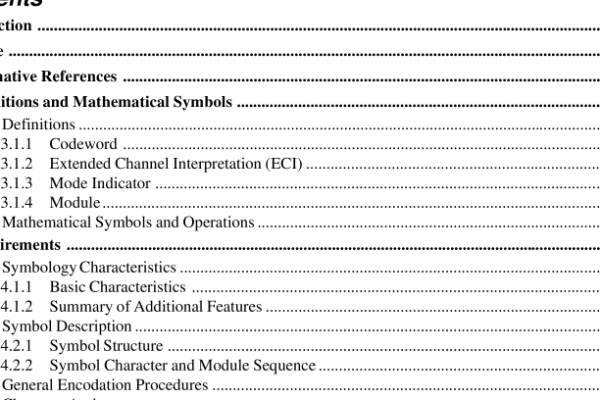ISO IEC 16023:2000 pdf download – Information technology — International symbology specification — MaxiCode.
4.4.4.3 Lock-In Character A Lock-In Character, following a Shift Character for the same Code Set has the effect of behaving as a Latch Character. The Code Set remains in effect until a Latch Character is invoked. 4.4.4.4 Double Shift Characters A Double Shift Character (referred to as [2 Shift A]) is used to switch from Code Set B to Code Set A for the next two characters following the [2 Shift A] Character. Subsequent characters shall revert to Code Set B. 4.4.4.5 Triple Shift Character A Triple Shift Character [3 Shift A] is used to switch from Code Set B to Code Set A for the next three characters following the [3 Shift A] Character. Subsequent characters shall revert to Code Set B. 4.4.4.6 Numeric Shift Numeric Shift allows 9 digit strings to be encoded into 6 codewords. A Numeric Shift Character [NS] indicates that the next five codewords, equivalent to 30 bits, encodes 9 numeric digits in binary format. Subsequent character encodation shall revert to the Code Set defined prior to the Numeric Shift Character. For longer numeric strings it is possible to mix numeric compaction using Numeric Shift(s) and conventional encodation. Annexe F provides more detailed advice about Numeric Shift for any length of digit string. 4.4.4.7 Extended Channel Interpretation Character An Extended Channel Interpretation (ECI) character is used to change from the default interpretation used to encode data. The Extended Channel Interpretation protocol is common across a number of symbologies and is defined more fully in Section 4.6. The ECI character shall be followed by one, two, three, or four codewords which identify the ECI being invoked. The new ECI remains in place until the end of the encoded data, or until another ECI character is used to invoke another interpretation. 4.4.4.8 Pad Character The Pad character in the first position is used for structured append (see Section 4.9); otherwise it is used to fill out remaining data capacity of the symbol.
4.5 User Considerations for Encoding Data in a MaxiCode Symbol A MaxiCode symbol has a fixed number of modules and codewords. The 144 codewords can be used to encode the mode, data, symbology control functions, and error correction. It is also possible to use structured append to combine up to eight MaxiCode symbols. A number of symbology parameters may be pre-determined by the application. These include the level of error correction and the mode. Other parameters are more associated with the data, including the use of particular character sets, the need for data to conform to particular application standards or message syntax (e.g. EDIFACT), and the degree of switching between Code Sets. MaxiCode encodation should be done automatically, but some general guidelines on the capacity of a symbol to encode data are given in Section 4.5.5 and Annexe G.
ISO IEC 16023:2000 pdf download – Information technology — International symbology specification — MaxiCode






